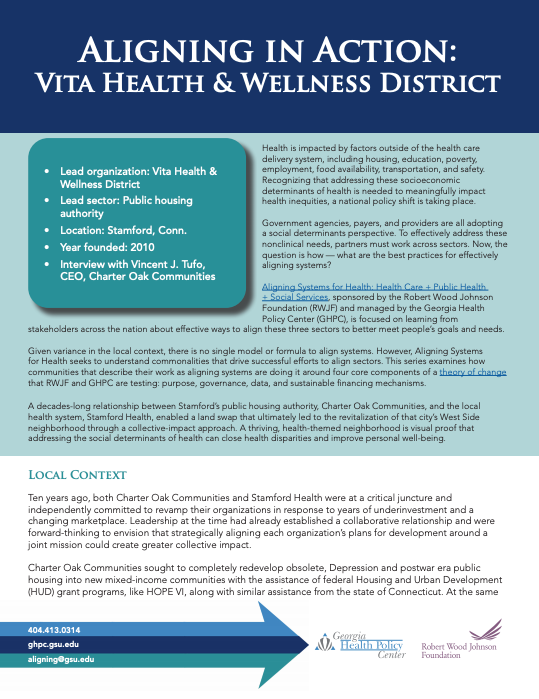
This case study examines how Stamford, Connecticut’s public housing authority, Charter Oak Communities, and the local health system, Stamford Health, enabled a land swap that ultimately led to the revitalization of that city’s West Side neighborhood through a collective-impact approach. The case study explores how communities that describe their work as aligning systems are doing it around four core components of a theory of change that the Robert Wood Johnson Foundation and Georgia Health Policy Center are testing: purpose, governance, data, and sustainable financing mechanisms.
The Charter Oak Communities and Stamford Health’s Vital Partnership arose out of a need to create a broader community upliftment around a shared vision. The first community health needs assessment served as a call to action, galvanizing multisector partners to begin meeting regularly that same year. The Vita Partnership uses a steering committee structure, having made an intentional decision not to incorporate as a legal entity.
Aligning Systems for Health: Health Care + Public Health + Social Services, supported by the Robert Wood Johnson Foundation and managed by the Georgia Health Policy Center, is focused on learning from stakeholders across the nation about effective ways to align these three sectors to better meet people’s goals and needs.

 Back to Resources
Back to Resources